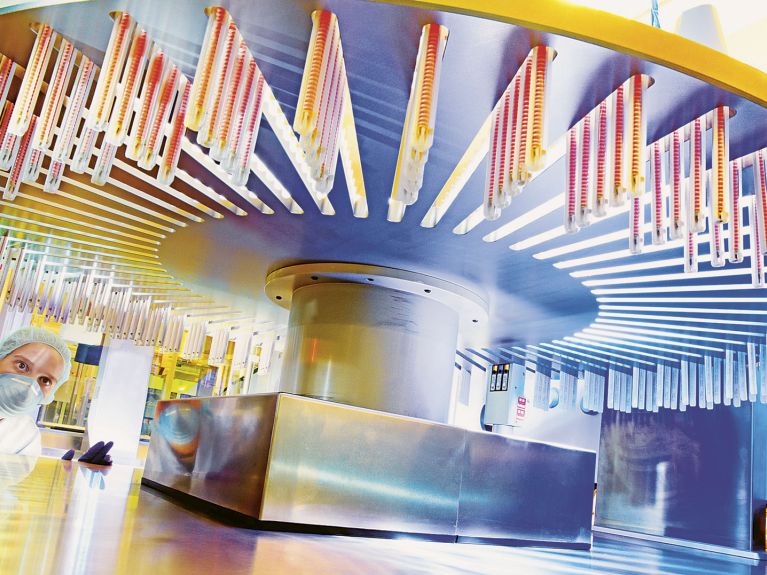Five reasons for Germany’s innovative strength
Targeted investments, worldwide collaboration: that’s why Germany creates so many innovations.

New funding record in research and development
In 2016 the federal government and German industry and science spent the record sum of 92.2 billion euros on research and development. That is the equivalent of 2.94 per cent of Germany’s gross domestic product (GDP). In comparison: the 28 countries in the European Union last spent an average of 2.03 per cent of their GDP on research and development. By 2025 at the latest, Germany aims to spend an annual 3.5 per cent of its GDP on research and development.
Fields with a future
The federation currently invests the highest amounts of funding in health research and the health industry, aerospace research, energy research and technologies, and large-scale equipment for basic research.
Dieses YouTube-Video kann in einem neuen Tab abgespielt werden
YouTube öffnenThird party content
We use YouTube to embed content that may collect data about your activity. Please review the details and accept the service to see this content.
Open consent formEconomy with vision
In 2015, Germany had 371 patents with world market potential per one million inhabitants. That was more than the USA (200) and China (27), but less than Switzerland (612), Sweden (445) and Japan (387). In 2016, German enterprises spent 158.8 billion euros on innovation. More than three-quarters of this total was spent by industry.
The value of science
The number of scientific publications per one million inhabitants has continually increased over the last two decades. In 2016, 1,367 publications were published per one million inhabitants. This density is higher than in the USA or Japan. But Scandinavian countries, Austria and Great Britain have higher publication densities than Germany.
Strong networking in politics, industry and science
How comprehensively German politics, industry and science work together is illustrated by an exceptional network: in the five international metropolises New York, São Paulo, Moscow, New Delhi and Tokyo, the German Houses for Research and Innovation (DWIH) unite the decisive actors of Germany’s innovation landscape.
Deutschland Edition: download the magazine as an e-paper for free


